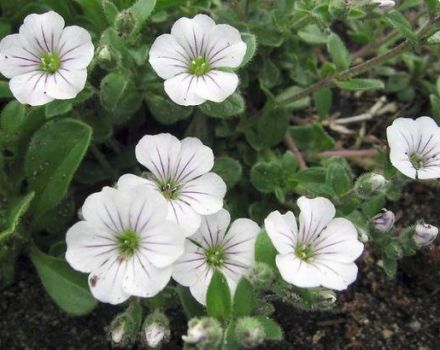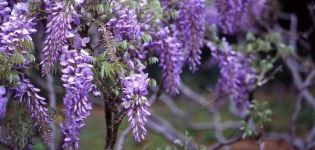Description of a climbing rose of the Indigoletta variety, planting and care
It is not for nothing that the rose is called the queen. The flower, symbolizing love and innocence, is grown in courtyards and dachas, on the streets and in parks, cultivated in botanical gardens. Breeders have bred many varieties that differ in shape, size of flowers, color of petals. The climbing rose Indigoletta is suitable for creating a hedge, for decorating arches, decorating buildings.
History of appearance
The Azubis variety, with an unusual shade of flowers, which landscape designers are happy to use, was bred by a breeder from Holland, Van de Laak in 1981. The indigoletta immediately interested flower growers in purple buds, which are extremely rare in roses.
The plant feels fine in partial shade, where it acquires a rich color, is rarely affected by diseases. The branches of the rose, which is called the Blue Queen, are fanned out, which promotes abundant flowering both above and below the plant.
Description and characteristics of the Indigoletta rose
The height of the Rose Indigolett bush reaches 3 m. The corolla of a blossoming flower, covering the stamens and pistils, has a lilac-blue or pink color. The glass-shaped bud strikes with a bright purple hue. The diameter of the corolla, consisting of 3 dozen double petals, is at least 8 cm.
Dense bushes of the Indigoletta variety have powerful roots, tough lashes grow up to 1.5 m wide. The branches are covered with glossy leaves.
The rose blooms profusely in early and late summer, exudes a delicate aroma. For the winter, climbing bushes require insulation, but covering upright branches is not easy.

Main advantages and disadvantages
The beauty of the Indigoletta rose was appreciated not only by landscape designers of European countries, but also by flower growers of the Lower Volga region, Rostov and Kaliningrad regions, Moldova and Ukraine.
The advantages of the variety include:
- original color of buds and petals;
- good frost resistance;
- high decorativeness;
- abundant flowering;
- bright aroma.
The Dutch rose under cover does not freeze at -30 ° C, but the shoots are difficult to bend. Excessive moisture provokes the development of fungal diseases in the plant. Indigoletta loves light, but in the direct rays of the sun, the petals lose their bright color.
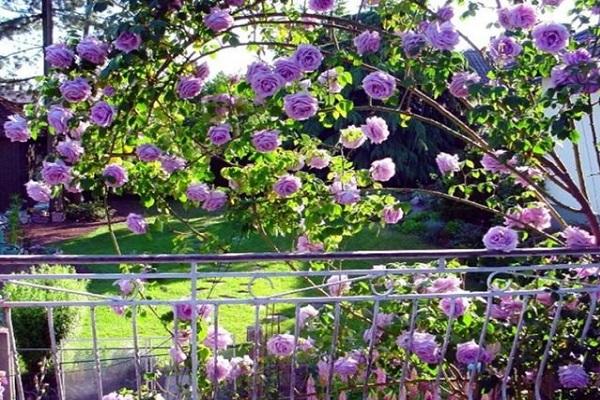
Growing features
Although the rose belongs to unpretentious crops, but in order for the plant to please with its decorative appearance and lush long flowering, you need to find a suitable place, take proper care of it.
When and where to plant?
To prevent infection with an infection, Indigoletta is not recommended to be placed on the site where roses used to grow. When used to create an arch, the bushes are planted on the side of the sun. It is comfortable for a plant in partial shade, where the flowers retain their rich color.
When placing Indigoletta along a gazebo or building, holes are made at a distance of a meter, which prevents the accumulation of moisture.
The rose does not tolerate stagnant water, does not tolerate drafts and cold winds, grows well in loose soil.
When planting in the spring, a climbing rose in summer shoots, pleases with thick foliage. When placed in the soil at the beginning of autumn, the bushes are strengthened, they tolerate winter well.
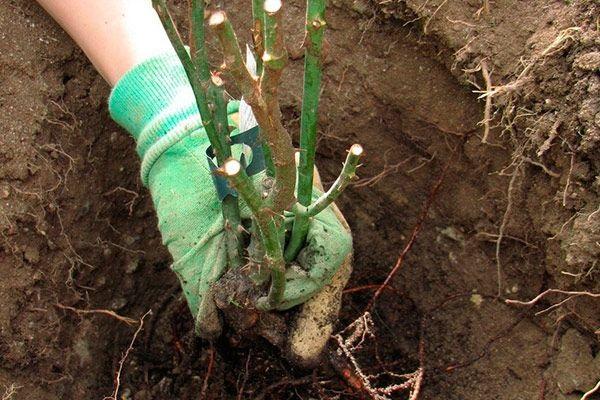
The choice of planting material
Roses of 1 or 2 years old with intact roots and two or three stems that have had time to woody quickly take root. Seedlings should be cut, free from leaves and berries. It is better to buy Indigoletta bushes that are sold in a container, although they are more expensive than roses with a bare root collar. If the bark of the seedlings has wrinkled, they need to be kept in water for several hours. When transported to the site, the roots of the plant should not dry out.
Landing scheme
Up to 7 buds are left on the rose bush, the shoots are shortened to 30 cm, glossing over the cut points. The hole is dug to a depth of half a meter, filled with the mixture:
- sand;
- compost;
- humus;
- land.
The Indigoletta seedling is placed in a hole so that the root collar is not covered with soil. An interval of 85–90 cm is left between the bushes, 1.5–2 m between rows.

So that the rose beautifully wraps around the fence, when planting, about one and a half meters recede from it.
Variety care recommendations
Indigoletta pleases with repeated flowering, bright shades, only when taken care of. Culture needs:
- in regular irrigation;
- top dressing;
- in loosening the earth;
- pruning branches.
To retain moisture, the soil under the plant is covered with sawdust, straw or peat. The shoots of a climbing rose are fixed to a support or trellis with a strong twine. More flowers appear on the processes directed horizontally.
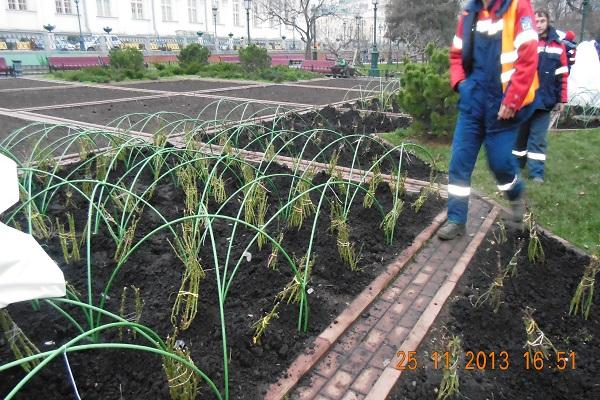
Watering
Young bushes need to be watered every week, but moisture stagnation should not be allowed, as this is fraught with root rot. If the plant is planted on the sunny side, twice a day the stems, the leaves are advised to be sprayed with warm water. For the first month, a bucket of liquid is poured under the rose, in the heat - two at a time. It is not recommended to irrigate a flowering plant with a hose.
Top dressing and soil quality
2-3 months before planting a flower, the site is carefully dug up, roots and weeds are selected, the acidic soil is lime. They bring into the ground:
- organics;
- superphosphate;
- soil bacteria.
Fertilize the rose with mullein or mineral mixtures in which potassium and phosphorus are present. Before flowering, foliar feeding is performed. Care must be taken to use complexes containing nitrogen. With an excess of this component, leaves and stems grow, but few buds are formed.
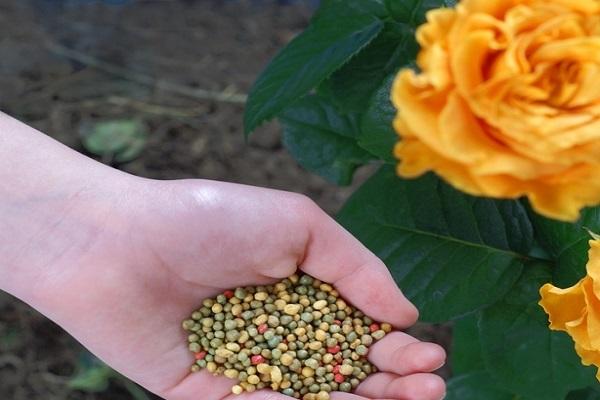
Pruning and replanting
In spring and autumn, old, dry and diseased branches are removed, whips are shortened, the length of which is higher than the support. No more than three annual growths and up to 7 shoots with flowers are left on the rose.
The Indigoletta is transplanted in the spring before the leaves begin to bloom. By this time, the earth should warm up to 7 ° C. To form strong roots, the buds formed on the rose are advised to be torn off.
It is better to replant the bushes in the fall one and a half months before the arrival of frost. Before the procedure, the plant is watered abundantly, the shoots are tied and dug in a circle to a depth of 0.2 m. When loose, the rose is easily removed from the soil.

The roots need to be shortened, dried or rotten areas removed. Places of cuts should be sprinkled with ash or treated with brilliant green. A bush is planted in a prepared hole together with a lump of earth, adding soil, watering and tamping the soil several times.
Features of wintering a flower
If the air temperature in the coldest month of the year does not drop below -15 ° C, you can simply spud the rose high. In middle latitudes, loops of ropes are first thrown onto the shoots of Indigoletta, tilted to the ground, and stabbed with pegs. A week later, the branches are lowered even lower, shortening the twine. Blocks are placed under the base, needles or sawdust are poured on top, covered with foil.
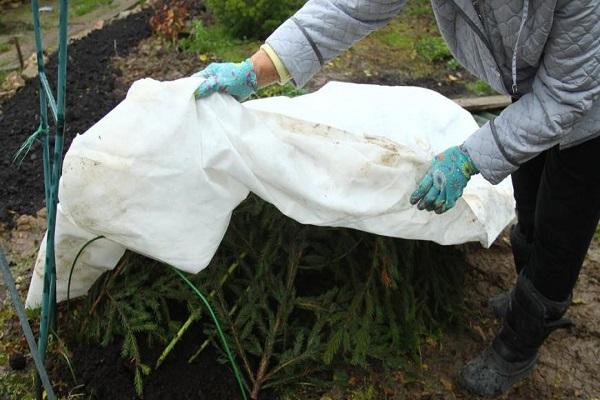
Disease and pest control methods
Indigoletta suffers from powdery mildew, leaves are covered with bloom, buds dry up. In order to prevent the disease from affecting the rose, in the spring the bushes are sprayed with copper preparations, in the summer - with a solution made from soap and caustic soda.
Infected shoots are excised with leaves and burned. The plant is treated with "Gamair", "Planriz" or "Fitosporin".
In damp warm weather, Indigoletta is affected by black spotted. The timely removal of leaves from the site, adherence to watering rules helps to prevent the development of the disease. For the treatment of plants, spraying with Bordeaux liquid is carried out, biological fungicides such as "Ridomil Gold", "Topaz" are used.
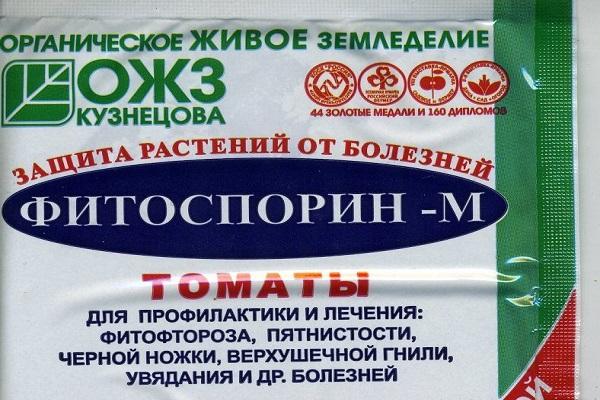
Rose propagation
It is possible to dilute the Indigoletta variety on the site with shoots, and even better with cuttings with 3 nodes. The incision is made at an angle of 45 ° from the lower bud, the leaves are cut off. Shoots are planted in a container filled with a mixture of sand and earth and covered with glass or foil.
With regular watering, the cuttings sprout roots.
Use in garden design
Twisting roses growing close to each other form a hedge. The flowering shoots of the Indigoletta variety are decorated with semicircular metal arches installed to frame a plot or flower bed. Roses are planted near lawns, paths, placed next to stones.








